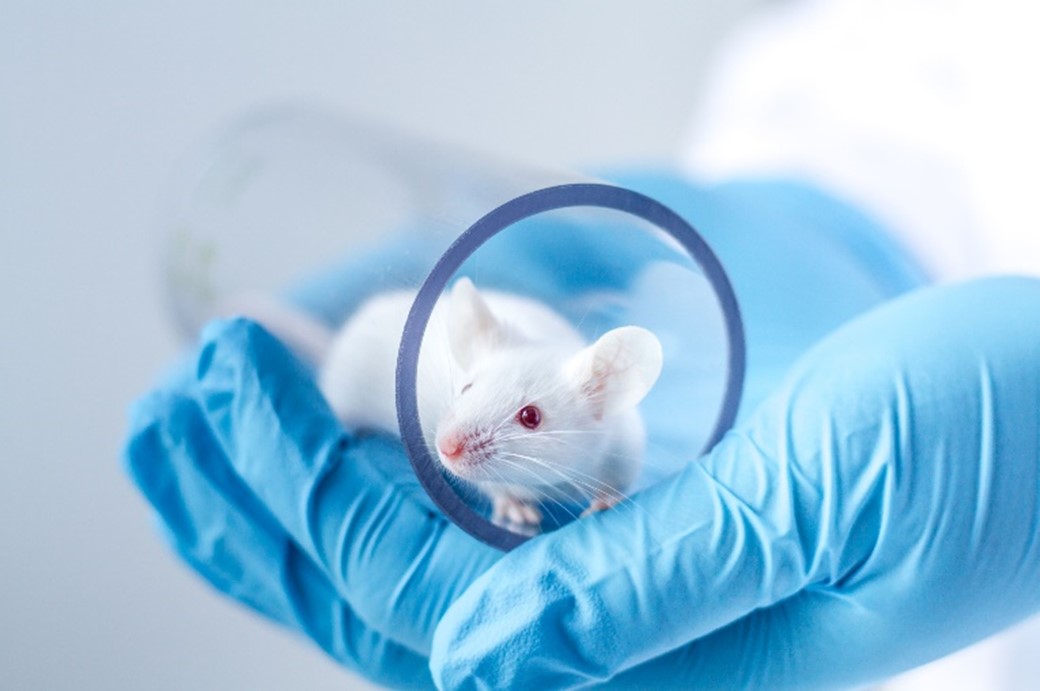Using CO2 to kill food and laboratory animals is standard practice worldwide. How stressful this method is for the animals has not been fully clarified. In a study initiated by the FSVO, researchers are investigating this question and seeking alternative methods that are kinder and more welfare-compliant.
The proficient and welfare-compliant euthanasia of laboratory animals is set out in an FSVO technical information paper (Researchers (admin.ch) > More information > In detail). The relevant guidelines are regularly reviewed and adapted in line with the latest findings. Crucially, strain on the animals during euthanasia should be minimised; in other words, euthanasia should entail as little stress and discomfort as possible.

Seeking a kinder killing method
Several hundred thousand laboratory animals are killed annually in Switzerland using carbon dioxide (CO2). How stressful this method is for the animals remains in dispute. Other anaesthetic gases could offer an alternative. Accompanying measures could help to reduce stress or discomfort during euthanasia.
To explore outstanding questions around this topic, the FSVO awarded the research contract “Welfare-compliant euthanasia of laboratory rodents” to the University of Zurich under a WTO tender.
By the end of 2025, the project aims to answer the following questions:
- To what extent are mice and rats exposed to stress and discomfort before losing consciousness due to anaesthesia with CO2 or another anaesthetic gas, and when exactly does the loss of consciousness occur in each case?
- Which gases are less stressful and unpleasant for mice and rats than CO2?
- Which measures accompanying anaesthesia and euthanasia help to minimise stress or discomfort before loss of consciousness?
Euthanasia using CO2 and other anaesthetic gases
All killing techniques using anaesthetic gases, including CO2, ultimately cause an overdose of anaesthesia to the point of respiratory arrest. It is not yet known how much stress, discomfort or even fear animals experience before they lose consciousness during this process. There is also a lack of information in animals allowing us to establish the exact time when consciousness is lost during anaesthesia.
Due to its unpleasant side effects (general malaise, headache, dizziness, respiratory tract irritation, and even respiratory distress at high concentrations), CO2 is no longer used in humans. In animals, it is still used for pre-slaughter stunning (pigs, poultry) and for killing food or laboratory animals.
CO2 is a colourless gas that is odourless at low concentrations but has a sharp or sour smell at high concentrations. If animals are able to choose, they avoid areas with high levels of CO2. However, this applies equally to other anaesthetic gases, which usually also have a pungent odour. The conclusion is that the animals find this unpleasant or worse.
The loss-of-control stage that precedes unconsciousness will always entail some degree of stress and discomfort for the animals. For this reason, a stage of unconsciousness corresponding to a loss of sensation, pain and perception should be attained as soon as possible.
The FSVO and 3R principles
3R or the “Three Rs” stands for Replacement, Reduction and Refinement of animal testing.
Pain, suffering and distress for animals should be avoided as far as possible or at least reduced. The FSVO therefore discusses the stunning and killing of animals in the context of food production and research involving animals: Tiere müssen angst- und schmerzfrei getötet werden – eine Selbstverständlichkeit? (admin.ch) (page available in German, French and Italian)
The FSVO research project Welfare-compliant euthanasia of laboratory rodents (ARAMIS 2.21.03) addresses the third of the Three Rs and seeks to refine methods for killing laboratory rodents.
More Information
Last modification 08.06.2023




